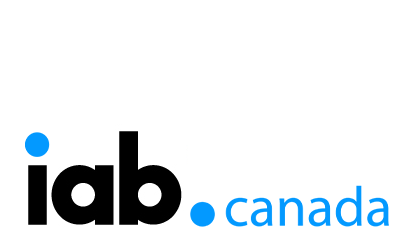Five Ways to Make
Creative Work in CTV

By Jessica Hondolero, VP Creative Solutions at Clinch
January 6, 2023
Smart TVs (aka, Connected TVs) are everywhere and what viewers are doing with them is even smarter: shaping their television viewing around their preferences in ways they never could with linear-only sets. So advertising also needs to be smarter and shape itself around viewer preferences in order to match the likes, wants, and needs of the individuals in the audience.
That word in italics, individuals, is the key, because mass advertising the broadcast way does not fit well into the CTV universe. To get the most out of your media spend, you should choose versions of your ad that contain the right pitch, product, and persona for the person on the viewing end of the experience.
The return for doing this is a more receptive audience, more effective ads, and the types of insights that were never possible with broadcast. The ability to hyper-personalize ad content to the individual viewer or household is not far-fetched, it’s available right now with the right technology and a creative mindset that understands that big audiences (in numbers) are no longer mass audiences (in addressability).
Below are five tips for developing ads that will work on CTV.
The Basics: Defining Your CTV Personalization Strategy
The key to personalization is experimentation, understanding what creative elements appeal to different kinds of people, mixing and matching those elements until the right combinations of elements and audience emerge (not as time consuming as you might think), and continually a/b/… testing throughout the campaign.
That means you’ll need to think not in terms of the mass audience your single set of creative is meant to reach, but all the permutations of the product or offer, how to provide elements with local appeal, and what times and circumstances the various personas who make up the audience may be in when viewing the ad (at home on a TV, streaming on a mobile device, etc.) All these things can be sourced in the master creative, but the elements should be isolated and new potential messages for secondary audiences may need to be developed.
All this comes from your normal set of goals: what are we trying to accomplish, with whom, and what metrics will tell us we succeeded.
Leverage Opportunities for Learning and Efficiency
Personalization allows deeper understanding of what works for your audience. So, while creative variations are the fuel for personalization, that doesn’t mean throwing the kitchen sink at the campaign is not what I mean. We want there to be enough to test so that a clear picture emerges of what works and what doesn’t – learning that can be used in downstream campaigns as well as today’s – but too much creative makes for muddy findings.
Think about the scale of the campaign and design creative proportional to the spend and the targeting. Select dynamic elements that align with what you know about viewer motivations and interests, and which allow for production efficiencies by leveraging existing assets. Keep the big picture in mind and be guided in all this by learnings from other channels. What appeals to someone in social will likely appeal to them in CTV, so think through how to develop native CTV creative from wherever insights lead you.
You don’t have or want clicks on a TV experience (and the viewer sure doesn’t want to interrupt their show to chase a product), so attribution takes on a different meaning in CTV. Working with a flexible and agnostic ad distribution technology should enable you to work with attribution partners that can help you understand effectiveness in real time and on a household level, attribute actions on secondary devices, and better understand conversion activity that can both add dimension to your campaign metrics and be used to optimize creative.
Make an Impactful Viewing Experience Driven by Data
The ad load in CTV is often not as large as on linear and, on some platforms, the viewer knows just how much time is left before the show returns. Ads on on-demand programming are not the user’s idea of a good time. So, you have to work a little harder to earn attention. Personalization is one way to do that but treating the viewer as respectfully as possible makes you a good advertising citizen to them.
Keep your ads as short and concise as they can be. Make sure the key elements of your campaign – Brand, Product, Call to Action, Offer, etc. – are always in view and be consistent with ads that may appear in other channels. Media isn’t the only thing that is omnichannel, viewers are too.
Part of being concise is keeping the screen space as uncrowded as possible. So as not to ask too much of the audience – they don’t want interactive ads just because they are on a platform that may fall into the “digital” bucket.
Make it Actionable
Too often, advertisers will simply repurpose linear ads for CTV. But the format – and the ability to personalize – allows for much more. A few small tweaks to the ad may make it more actionable.
These tweaks include a clear and, ideally, persistent CTA that aligns with both your goals and the audiences’ preferences. Audiences under 50 are generally at home with QR codes, which can extend the actionable life of your ad by allowing viewers to capture and freeze their “click” until after the show (which is another reason the integration between attribution and distribution technologies are so important).
Pay attention to viewer location. For example, if you are a retailer, link offline and online products, so you are promoting things your audience can find on the shelf in your local outlet. Dynamic maps and location-specific QR codes are easily inserted in personalized ads to make it easy for the viewer to fulfill your goals.
Make it Relevant
I know. Obvs. But get this: what is relevant for an audience changes with time of day and circumstances. Anticipating this and having your distribution strategy respond using personalization technology to keep products and messages relevant solves for this.
That may be as simple as dayparting, but personalized ads can be made non-static so they can carry event countdowns to create a sense of urgency for the viewer. Ads can also be developed to respond to weather (by changing the central product the ad is promoting or simply acknowledging in some way that it’s a grey day outside) or local sports (by changing matchup, time, date, viewing platform, and location information according to the schedule.
Personalization in CTV can work for both CPG brands (by driving purchase at local retailers) and by retailers (by promoting strategic products or driving in-store or online sales through offers and events).
Relevancy is informed by custom data integrations to, for example, pull in very local data like local prices for promoted products in ads bought by a national grocery chain.
The common thread in all five of the sections above is keeping your creative nimble and focused on what matters to the viewer. That sensitivity will pay you back in ROAS and ROI, but more importantly it will make you the respectful and helpful advertiser that viewers want.



